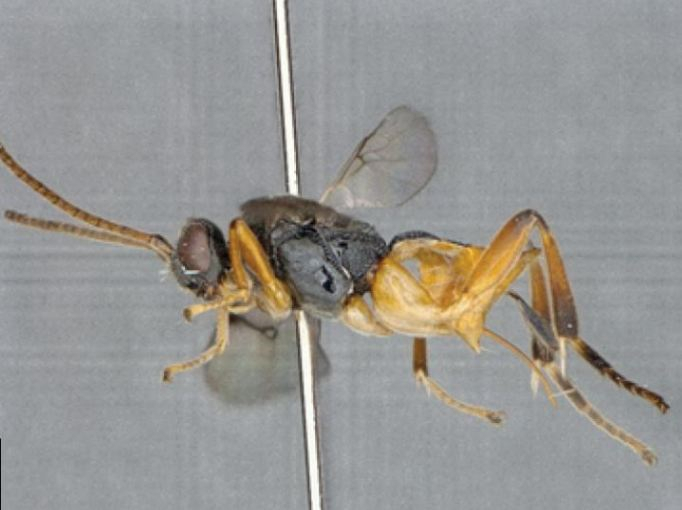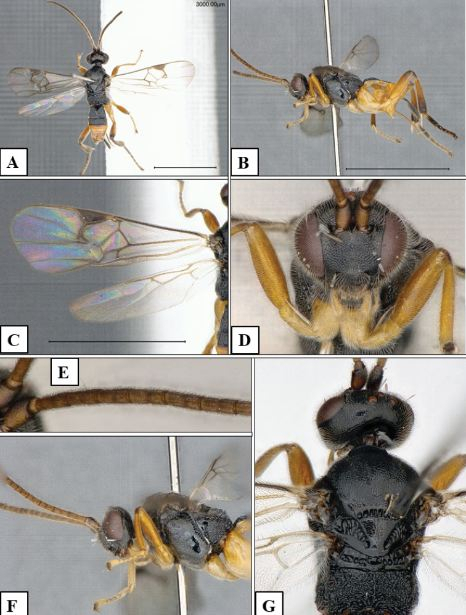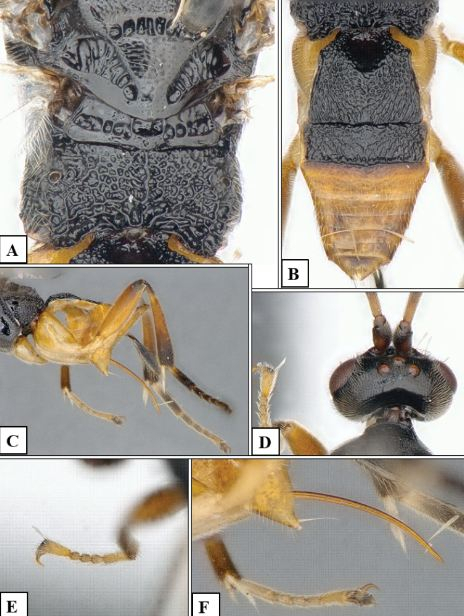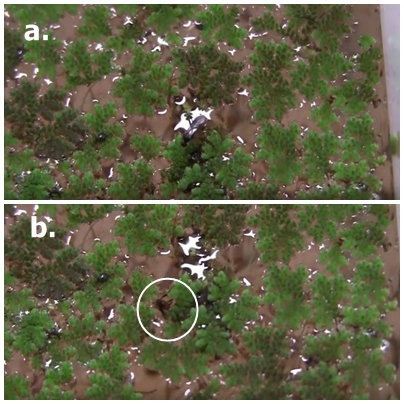Birds of prey such as eagles, kites, and condors give meaning to the phrase "Death from above" their true meaning. Scientists have now discovered a new species of parasitic wasp that embodies the statement of not just "Death from below" but also "Death from underwater", much like the popular Japanese kaiju, Gōjira (anglicized as Godzilla).
Named after the famous Japanese sea-monster, Microgaster Godzilla dives underwater for several seconds for attacking and pulling in caterpillars moving through the vegetation above in order to lay its eggs inside the awe-struck hosts, following which it releases them back into the water. And like Godzilla, emerges from the water. It is the first time that a parasitoid wasp was recorded diving underwater on camera.

Talking about naming the wasp after the Japanese cultural icon, Dr. Jose Fernandez-Triana, lead author of the study, said in a statement, "As you can see, we had biological, behavioural and cultural reasons to justify our choice of a name. Of course, that and having a bit of fun, because that is also an important part of life and science!"
Emerging From Water Like Godzilla
Parasitoid wasps belong to an order of insects known as Hymenoptera. They are called so due to their habit of laying eggs on or within other insects, which ultimately leads to their demise as the larvae grow. A rare handful of species of parasitoid wasps can be described as aquatic. Among these species, less than 0.1 percent are known to enter the water while seeking potential hosts, or living within aquatic hosts as endoparasitoids during their larva stage.

Only two species belonging to a subfamily Microgastrinae within the Braconidae family, have been previously observed and recorded to exhibit aquatic behavior while displaying parasitism of aquatic caterpillars of moths. Nevertheless, until Microgaster Godzilla came along, no species was known to dive underwater to seek out and impregnate hosts. Therefore, capturing the kaiju namesake in action provided not only new insights into parasitoid wasps, but also served as documentation of first-of-its-kind behavior.

"Usually, taxonomic descriptions of parasitoid wasps are based on dead specimens, with very few details–often none–on its biology. Thanks to my biocontrol colleagues, we could add more information to what is known about the new species being described," said Dr. Fernandez-Triana about the study.
Turning Caterpillars Into Live Nests
To study the behavior of the wasps, the insects were grown from the larvae or caterpillars of the moth species Elophila turbata, which were collected across several Japanese cities. The adult wasps that emerged from the caterpillars were kept in laboratory conditions for the study of their parasitism. Next, they placed a single female wasp along with 20 caterpillars in an aquarium with water and aquatic plants and recorded the proceedings on tape.

In the video made available by the authors, the female was can be observed traversing over plants floating in the water looking for hosts, particularly, the larvae of Elophila turbata. These caterpillars are known to build portable cases from pieces of aquatic plants and live inside them close to the surface of the water. Upon finding such a case, the wasp repeatedly probes it using its antennae as it moves around. This eventually forces the caterpillar to leave the case and venture out.

When the larva comes out, the wasp wastes no time in inserting its ovipositor— a tubular organ using which female insects deposit eggs—into the creature and parasitize it. In some instances, the wasp submerged itself completely for several seconds, to spot and pull the larvae from its case. In order to accomplish this, the Microgaster Godzilla has evolved strongly curved and enlarged tarsal claws. It is believed that the claws are utilized for gripping the surface of the water as it enters it seeking hosts.









